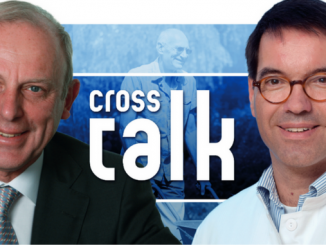«We must abandon the fiction that current oversight systems are adequate to protect volunteers in first-in-human trials or to steward scientific efforts»: this is the strong conclusion of a paper published in Nature by two bioethicists of the McGill University, in Montreal, on first-in-human studies, often approved despite the lack of evidence of a significant promise of efficacy.
Jonathan Kimmelman, who wrote the comment with his PhD student Carole Federico, has been studying this topic for the last decade, and currently directs a research group at McGill, called STREAM, devoted to understanding the ethics and policy of drug development. Their latests analysis starts from the recent case of the French phase 1 trial by Bial in which one previously healthy volunteer died and four others were hospitalised with serious neurological complications. That high price, according to the authors, was paid for what in retrospect looks more like a high-risk bet than a careful investment: «The 63-page Investigator Brochure describing the trial included fewer than two pages of evidence that the drug had the desired pharmacological activity. It identified only two studies presented as evidence for efficacy, both problematic» Kimmelman points out, insisting that apart from cases of acute toxicity the overall balance needs to be reconsidered, since trials of ineffective therapies place burdens on society even when participants aren’t harmed.
«Ethics requires clear-eyed evaluation of a drug’s potential» Kimmelman and Federico write, recapitulating the three main questions that can help provide clarity.
What is the likelihood that the drug will prove clinically useful?
• How have other drugs in the same class or against the same target performed in human trials?
• How have other drugs addressing the same disease process fared?
Assume the drug works in humans. What is the likelihood of observing the preclinical results?
• Are the treatment effects seen in animals large and consistent enough to suggest a tangible benefit to patients?
• How well do animal models reflect human disease?
Assume the drug does not work in humans. What is the likelihood of observing the preclinical results?
• Have effects of random variation and bias been minimized (for example by sample sizes, randomization, blinding, dose-response curves and proper controls)?
• Do the conditions of the experiment (for instance age of animal models, timing of treatments and outcomes) match clinical scenarios?
• Have effects been reproduced in different models and/or in independent laboratories?
In order to improve the situation, health authorities should require drugs sponsors to include negative results from animal studies in documents submitted to investigators and ethics committees; trials should be allowed to proceed only after careful vetting of the preclinical evidence by independent experts; reviewers should be encouraged to consider a broad base of evidence in assessing the probability that a drug will prove clinically useful.
Anticipating the objections that this approach could increase costs and time for drug development, the researchers insist that more-thorough assessments of clinical potential before trials could reduce failure rates, and thereby offset development costs.






Good question! But IRBs and HRAs are there to check the ethics in Phase I CTs.
A doubt, posted elsewhere. the first blood transfusion was reported more than two centuries ago, to a young man, employee of the experimenter, thus lacking any autonomy, but supposedly was from animal blood to an human. I don’t think this is feasible without eliciting an immediate acute and deadly major incompatibility reaction, thus, the reality of this experiment actually taking place must be put under serious doubts.
‘First in humans’, or Phase I new drug studies, have mainly a Pharmacological, PK and Toxicity ascertaining goals, groups are added in an stepwise way until a: ‘dose limiting toxicity’ is reached; conducted mostly in cohorts of five, the dose level in which 2 or more toxic events appear is considered limit dose, and discarded for further use, but the field is in constant change. This approach has some inherent risks, Phase I is usually conducted in paid volunteers, with exceptions, as the Neisser, Concentration camps, and Tuskegee experiments. Imprisoned people are no longer considered free volunteers for any medical procedure. Anti-cancer products having important risks, Phase I is offered to volunteer cancer patients having exhausted previous (approved) lines of therapy. Just in Phase II efficacy begins to be watched, ‘First in human’ studies results may provide activity hints, but it would be a methodological mistake giving too much consideration to it. New Drug research is a long, stepwise, give and take activity
Thank you for your comments, and let me ask you to clarify your opinion on the specific concerns raised by the bioethicists Jonathan Kimmelman and Carole Federico in their comment on Nature.
I am thinking particularly about these statements, which were not cited in the news piece:
«Regulators in Europe and North America evaluate safety before human trials can proceed, but they do not currently demand evidence for potential efficacy».
«We believe that many FIH studies are launched on the basis of flimsy, underscrutinized evidence».
«[…] even if individual participants are not harmed, trials of ineffective therapies place burdens on society. Drug development is costly, in terms of money and people. Patients, healthy volunteers and experts involved in testing a dud treatment are not available for more promising ones. Expenses wasted on ineffective therapies and uninformative trials result in higher drug prices. Investigators, host institutions and sponsors have a responsibility to consider all this before embarking on new research programmes».
Thanks for the interest, but Clinical Research is expensive, and although pharma industry sets prices to pay for all the expenses, considering that few of the screened products will ever reach market, so, no revenues, but expenses, no ‘First in humans’ is started without some hints of efficacy. When a product enters early studies, the results of chemical research about synthesis, also in vitro and animal studies are most often already published, products are screened most times based on a series of efficacy hints, for example, regarding antipsychotics, its effect on the turtle’s ‘head up’ reflex. No product reaches humans if no efficacy was shown some way. I participated as volunteer while an student in some physiology experiments, have 5 years of staff clinical research experience in the then 6th world pharma, phase III and phase IV CTs, plus over a decade as free-lance work for a CRO, although my main activity has been primary care practitioner, also in medical oncology, so, I’d say the concerns in the article have little contact with reality; crying: Wolf! in the middle of sea is dangerous, as it can put you in the condition of a Robin Hood having no poor to help, but still stealing the ‘rich’
I see your point.
Still, even without approaching the issue of profit margins of the “rich”, it seems to me that the two ethicists say that there is room for introducing incentives to improve the current situation (in which, as you write, all financial costs are reflected in the final price, after all). They say a better balance in terms of financial and non-financial costs could be found.
The history of medicine is full of case histories of researchers’ behaviours that in retrospect we consider unethical, even though they generally appeared legitimate at the time. So, if I understand correctly their reasoning, it has nothing to do with crying wolf, but rather with trying to re-evaluate cost-benefit and cost-effectiveness – and hence ethics – in a more comprehensive manner.